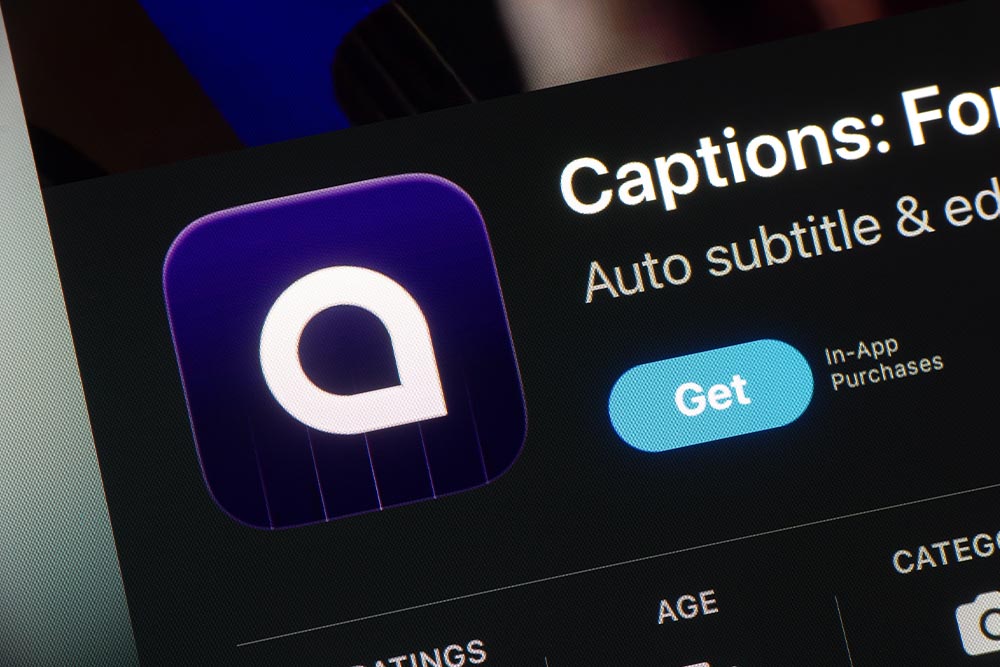
Understanding the Importance of Closed Captions in Online Course Design
Closed captions are often an underrated element in online course design, but they play an integral role in fostering inclusivity and improving the learning experience for diverse audiences. It’s important to understand that closed captions don’t only benefit those who have hearing difficulties, but they also accommodate a wider range of learners.
Closed captions deliver the spoken content in a written format, appearing within the video frame itself, thus providing a verbatim account of the audio. This ability to both read and hear the material can enhance comprehension, especially for complex subjects which warrant a more in-depth understanding.
Firstly, it’s crucial to note that closed captions serve as an important accessibility tool for learners who are deaf or hard of hearing. Given the rise in online education platforms, the lack of such features can exclude this group of learners from participating fully in the learning process. With closed captions, they can actively engage with the content, fostering an inclusive learning environment.
Secondly, closed captions can significantly improve comprehension and retention of information for learners whose first language is not English. This group often grapples with dialects, accents, and auditory comprehension. By having the ability to read the content, they can build a better understanding of the language used, thereby enhancing their overall learning.
Closed captions also enhance learning flexibility. Many learners often study in loud environments or don’t want to disturb others around them. Hence, they may have to mute the video and rely only on the visual cues. Closed captions can support this type of learning by presenting the content verbatim without any sound.
Furthermore, closed captions can help users find and navigate through a course more efficiently. It’s not uncommon for learners to return to a particular part of a course for reference or revision. With the transcript provided by closed captions, they can easily search for a particular phrase or keyword and navigate directly to the relevant section.
Lastly, research has shown that reading while listening can actually enhance the overall learning process. This highlights the importance of closed captions in providing a multimodal approach to learning, engaging a higher cognitive function by providing multiple sensory inputs.
In brief, closed captions in online course design serve multiple roles – from fostering inclusivity and improving comprehension to enhancing course navigation. It’s an overall win-win for both the learners and course creators. Recognizing this importance is the first step towards creating effective and accessible online courses. Considering the diversity of learners’ needs during course design will not only attract a wider audience but also ensure that no learner is left behind on their educational journey.
The next chapter will delve deeper into the role accessibility plays in shaping online education and how closed captions contribute to making learning more accessible for everyone.

The Role of Accessibility in Online Education
Accessibility, in the context of online education, is the practice of ensuring all students, regardless of their abilities or disabilities, can fully take part in learning activities. Typical accessibility considerations may include visual impairments, hearing impairments, cognitive disabilities, and limitations in mobility. The advent of online education has underscored the significance of these accessibility concerns because now, more than ever, the nature of learning is digital, self-guided, and often solitary.
A central premise of accessibility in online education is the understanding and acknowledgment that students come to the virtual classroom with a diverse range of abilities, strengths, and limitations. Given such a diverse student body, it becomes vital to incorporate numerous ways of learning and interacting with materials to cater to the different needs of the students.
Closed captioning serves as one primary feature of inclusive, accessible design in online education. It ensures that learners who are deaf or hard of hearing can access the same information as their peers. Captions also help learners who may not be fluent in the language of instruction or prefer to see the words in writing for clarity.
In the increasingly inclusive educational setting of the 21st century, the necessity of accessibility does not end with the provision of captions. It also encompasses other elements such as easy navigation, screen-reading facilities, and adjustable text size. These assist those with visual or cognitive impairments.
Moreover, accessibility is not only a matter of principle, duty, or a legal requirement. It has pragmatic implications as well: a more accessible course can lead to better engagement, retention, and performance. When students feel considered and supported, their educational experience inevitably improves, leading to better academic results and increased engagement.
The COVID-19 pandemic, which pushed many educational institutions to go fully online, has served as a wakeup call as the lack of accessibility in many digital platforms became suddenly glaring. As educators and course developers, it is our duty to take this lesson on board, ensuring our courses are accessible, engaging, and inclusive; providing every learner with the opportunity to succeed.
In conclusion, accessibility in online education signifies a commitment to equity, diversity, and inclusivity. It’s about acknowledging and respecting the individuality of every student and creating a learning environment where every learner is valued and can thrive. As mirroring such principles in online course design, closed captioning is not just a tool for inclusivity but a cornerstone that reinforces the premise that education is for all.

The Value of Closed Captions for Diverse Learners
Closed captioning, although initially designed to assist people with hearing impairments, has proven to be invaluable to a much broader demographic. This sweeping range of benefits extends not only to deaf and hard-of-hearing individuals, but also to diverse learners encompassing students with different learning styles, non-native speakers, and those studying in noise-sensitive environments.
The first group who greatly benefits from closed captions are students with auditory processing disorders or learning disabilities. As per the Individuals with Disabilities Education Act (IDEA), education institutions are mandated to provide aids to students with disabilities in order to create an equal learning opportunity. Here, closed captions offer an effective visual tool that supports auditory learning, making information retention and comprehension less demanding and more efficient. This supports the educational concept of universal design for learning (UDL), which advocates for multiple means of representation of educational content to cater to a wide spectrum of learning needs.
Next, students who are non-native language speakers can greatly benefit from closed captions. Text captions can improve language comprehension, supplementing auditory learning with visual learning which can help students better understand the context and content of the lesson. This text-based approach can also help improve their vocabulary and grammatical structure understanding, contributing significantly to language acquisition overall.
Moreover, closed captions help students studying in noisy or quiet environments where the volume cannot be adjusted. Students commuting on public transportation, studying in a crowded café, or even those studying late at night while their roommate is sleeping, can continue with their coursework without disruption, thanks to closed captions.
In addition, research findings published in the Journal of the Postsecondary Education and Disability, indicates that closed captions also benefit students without disabilities. The study reveals that 52% of students use captions to help maintain focus, and a further 46% use them as a learning aid.
Therefore, the value of closed captions in online learning extends significantly beyond accessibility. They have become a universal tool that enriches eLearning, catering not only to individuals with hearing impairments but also diverse learners with varying needs. This reaffirms the necessity to incorporate closed captions across the board in all online course design and development to ensure equitable and inclusive education that truly leaves no learner behind.

Incorporating Closed Captions in Online Course Development Process
In the realm of eLearning, designing an inclusive and accessible online course is imperative. One of the most effective ways to ensure your course is accessible to everyone, particularly individuals with hearing impairments, is incorporating closed captions into your online course development process. These textual representations of the audio content not only assist people with hearing impairments but also provide a richer learning experience for other students.
The first step in incorporating closed captions involves understanding when and where to use them. Any video or audio multimedia in the online course needs to have accurate, synchronized textual descriptions. This includes lectures, webinars, videos, podcasts, and more. Make it a standard practice to include the closed captions while curating any of these resources.
Next is understanding your resources and deciding whether to caption your content in-house or outsource to professional captioning services. Depending on the size, complexity, and volume of your content, carefully decide which option suits your requirements. While in-house captioning can give you more control over the process, outsourcing can save you time and ensure professional quality.
Once closed captions are ready, synchronizing them with your multimedia content is vital. The captions must align appropriately with the audio to ensure context and facilitate understanding. Available tools, such as YouTube’s automatic caption synchronization or professional captioning software, can aid in accomplishing this task efficiently.
Upon successful synchronization of captions, essential quality checks must be performed. Check for accuracy, timing, completeness, and readability. Make sure to correct spelling, punctuation, and grammar errors, and ensure that the captions are appearing as intended.
It’s also crucial to keep in mind the aesthetics and functionality when incorporating closed captions in your course design. Closed captions should not obstruct important visual content, and users should be able to control their visibility. Most video players offer options where the user can turn on or off the captions. Implementing such functionality is crucial for a user-friendly experience.
Lastly, upholding a feedback mechanism is pivotal to continually improving the accessibility offerings in your course. Elicit feedback from students, including those with hearing impairments, to assess the effectiveness and accuracy of the closed captions. Use this feedback to continually refine your captioning process.
In essence, incorporating closed captions into online course development is not just about fulfilling accessibility compliance, but also about enhancing the overall learning experience. By keeping these guidelines in mind, course developers can create a more inclusive and accessible online learning environment, paving the way for a wider range of individuals to participate fully in the educational process.

The Legal Implications of Not Including Closed Captions
Implementing closed captions in online courses isn’t only crucial for creating an inclusive learning environment but also has legal implications. Several laws and regulations mandate the inclusion of closed captions in an effort to eradicate discrimination against individuals with disabilities.
One key example of such legislation is Section 504 of the Rehabilitation Act of 1973. This act prohibits discrimination based on disability in any program or activity that receives federal financial assistance. Schools, universities, and other educational institutions fall under this category. Therefore, it is obligatory for these entities to provide auxiliary aids and services, and closed captions, to equalize the learning opportunities for individuals with disabilities.
Similarly, the Americans with Disabilities Act (ADA) of 1990 supplements and reinforces these requirements by stipulating that all private and public entities must ensure effective communication with people who have hearing, vision, or speech impairments. For an online course, this entails making all course materials and platforms accessible for everyone, irrespective of their ability.
Further, the 21st-century Communications and Video Accessibility Act (CVAA) enforces accessibility of modern communications for people with disabilities. For educational institutions, this means providing closed captions for videos that were initially aired on television.
Non-compliance with these laws not only negatively impacts individuals with disabilities but also exposes institutions to potential lawsuits and reputational damage. Numerous educational institutions have been the subject of legal action due to their noncompliance with accessibility laws.
Even if an institution is not currently facing legal action, overlooking the importance of accessibility in online courses can lead to a tarnished brand reputation, lower enrollment numbers, and reduced trust from the community. In the long run, it is detrimental to an institution’s growth and sustainability.
Therefore, it is reasonably evident that the legal implications of not providing closed captions in online courses can be profound. But more importantly, making online courses accessible through closed captions and other tools is fundamentally the right thing to do. Given the increased digitalization of education, it is everyone’s responsibility to ensure that learning opportunities are open and accessible to all.
In conclusion, understanding and adhering to the legalities concerning providing closed captioning in online courses is as much about legal compliance as it is about promoting equality and inclusivity. By practicing inclusive design principles, we can create an online learning environment that is beneficial to all students.

Best Practices in Closed Captioning for Online Courses
As online course professionals, it’s vital to create a learning environment that is inclusive and considerate of all types of learners. In striving to improve the inclusivity and accessibility of our online courses, one essential tool at our disposal is closed captioning. Let’s delve into some of the best practices for integrating and using them effectively.
Firstly, always caption all audio content. This might seem obvious but ensuring every piece of content is captioned, be it lectures, tutorials or supplemental resources, is essential. This includes not just the spoken words, but descriptions of important non-verbal sounds, like applause or a door slamming, which can be vital to understanding the context.
Next, maintaining accuracy is crucial. A small typo or incorrect timing can disrupt the flow, making content hard to follow. So, meticulous proofreading helps eliminate any errors, thus making the captioning more effective and valuable. You must also ensure the spoken content and captions sync properly, so they don’t either lag behind or run ahead of the audio.
Another important factor is the font and size of the captions. Opt for a clear, easy-to-read font and size. Furthermore, carefully select the contrast between the text and its background to ensure it’s easily visible to all users.
Captions should not obscure relevant on-screen content. Position your captions in a way that they do not block any important visuals, graphs, bullet points or other elements. Furthermore, allowing users the option to move the captions around can significantly enhance their learning experience.
Provision of transcripts alongside videos can be incredibly useful. The ability to read along or have a downloadable version of the audio can be hugely beneficial – not only for hearing-impaired students but also for students who might prefer reading, students learning in a noisy environment, and even those who prefer English as a second language.
Foreign language content, when used, should be translated and captioned. This eliminates language barriers and makes content accessible for everyone.
Finally, consider seeking feedback from users. No one can provide more constructive feedback on the accessibility features than the users themselves, especially those who rely on them.
Remember, providing high-quality closed captioning is not just about accessibility and inclusiveness; many students find captions useful for various reasons such as enhancing comprehension, providing clarification, or even focusing better. By incorporating these best practices, you can elevate the overall online learning experience, providing an environment where everyone feels valued and heard.

Future Trends: Advanced Captioning Tools for Enhanced Accessibility
The use of closed captions in online course design is currently an important issue, emphasizing the necessity of making educational content accessible to all learners. Looking to the future, we can anticipate engaging with increasingly sophisticated tools that make this accessibility easier to achieve.
The advent of automatic speech recognition (ASR) technology has made significant strides in improving the accessibility of web content. ASR can quickly and accurately translate audio speech into text, making it an efficient tool for generating closed captions. While it might not always hit the mark, technological developments will inevitably make this technology even more reliable.
Artificial intelligence and machine learning will likely play important roles in the future of closed captioning. We can expect software to get smarter and better at recognizing and transcribing the spoken word, even when dealing with factors such as background noise, accents, or dialects that currently pose challenges for ASR. In the context of online course content, this accuracy will translate into more effective communication, better understanding, and improved accessibility for deaf and hard-of-hearing students.
Video content is increasingly king in digital learning landscapes. As technology improves, we will likely see video players built with integrated closed captioning functionality as standard. Similarly, lecture capturing tools will most likely become smarter, providing live automatic captioning of instructors’ talks and ensuring the content can be followed in real-time.
Interactive transcripts are another promising development, providing an interactive learning tool alongside closed captions. Rather than being a flat block of text, interactive transcripts allow you to skip to different points in a video by clicking on the relevant part of the transcript. Other possibilities include providing annotations, definitions, or further links within the transcript itself.
AI integration offers the promise of personalized captions – ones that adapt to a user’s specific needs. For example, this might mean providing descriptions of relevant sounds in a video for deaf or hard-of-hearing individuals, or changing the language of the captions for ELL students. With the help of artificial intelligence, we no longer have to provide one-size-fits-all solutions.
In conclusion, the future of closed captions in online course design is anything but stagnant. The tools currently being used will evolve, and entirely new tools will come into play, all aimed at better serving learners’ needs. As education increasingly moves online, the development field needs to stay on top of these trends to create more inclusive and effective course content. Today’s investment in accessibility features like closed captioning not only extends the reach of online education but is also a progressive move towards a universally inclusive learning environment.


